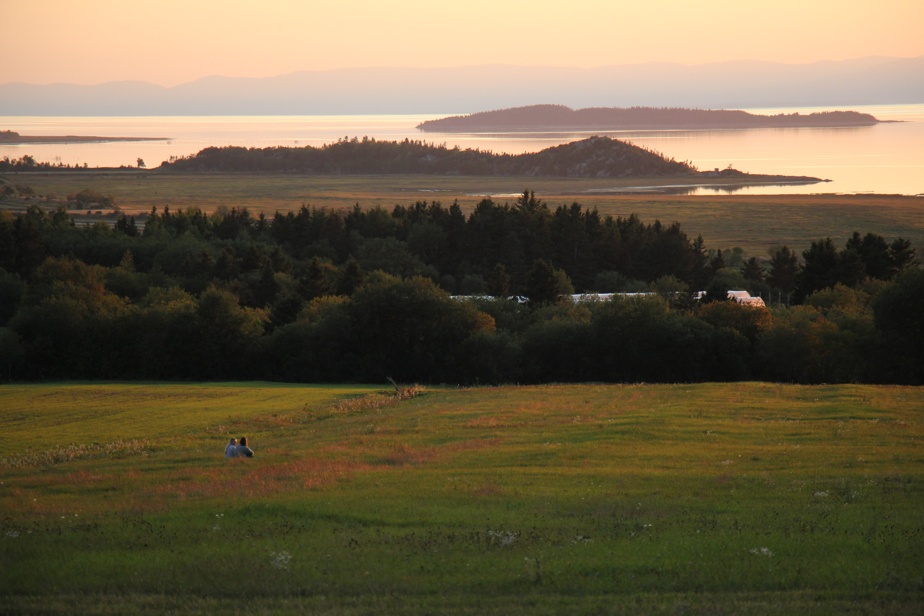
PHOTO FRANÇOIS ROY, LA PRESSE ARCHIVES
Damage caused by a high tide and a windstorm in Sainte-Flavie on December 6, 2010
Coastal erosion
The storm of December 6, 2010, which swept away up to 15 m of coastline, demonstrated this brutally: climate change is increasing coastal erosion and submersion. “When the big storms of December arrive, the shore is no longer protected from erosion by the ice,” explains the CEO of the CRE, Patrick Morin. However, coastal erosion has the same effect as all river overflows, underlines the public health director of the CISSS du Bas-Saint-Laurent, Dr Sylvain Leduc. “It creates significant anxiety, and not just in the immediate event! » More than 2,200 buildings risk being affected by 2065, for a bill amounting to $384 million. As for inland flooding, they are now likely to occur “in all seasons”, warns the inventory of vulnerabilities recently published by the CISSS.

PHOTO FRÉDériC CHOUINARD, PROVIDED BY SOPFEU
The smoke from the forest fires that raged on June 23 (here, in Lebel-sur-Quévillon) affected many regions.
Forest
Even if 85% of the territory is forested, forest fires have historically been “a one-off and insignificant phenomenon in Bas-Saint-Laurent”. The region can, however, be affected by second-hand smoke from the north, as seen with smog alerts last summer. Public Health even had to question the holding of sporting events, such as the Quebec Games and the Rimouski marathon – something never seen before in the region. “The entire Lower Laurentian population has become aware of the speed with which climate change is evolving,” underlines the Dr Sylvain Leduc.

PHOTO GETTY IMAGES
Days over 30°C will be more and more frequent in Bas-Saint-Laurent.
Heat
The region records only two days over 30°C per year on average, but these days will be five times more frequent by 2041-2070. “And not everyone is equal in the face of climate change. There are people for whom buying a heat pump or an air conditioner is not an option,” emphasizes Mr. Morin. Seniors, particularly vulnerable to the heat, are numerous in the region: in 2041, 36% of the population will be 65 years or older (compared to 26% in Quebec as a whole). However, more than 25% of seniors here live below the threshold low income, and even more among women (28.7%).

PHOTO MARTIN CHAMBERLAND, LA PRESSE ARCHIVES
Climate change could expand the territory of ragweed (in the photo).
Invaders
In addition to lengthening the seasonal allergy season, climate change could expand the territory of ragweed towards the east of the region, where it is still not very present. “Ragweed follows the highways. When we did our last mapping, it had changed enormously,” points out the Dr Sylvain Leduc. The blacklegged tick also has expansionist aims. Bas-Saint-Laurent has no cases of Lyme disease contracted in the region, but a quarter of ticks Ixodes scapularis who were tested there in 2021 were infected with the bacteria responsible for the disease (Borrelia burgdoferi).

PHOTO OLIVIER JEAN, LA PRESSE ARCHIVES
Walk along the river in Rimouski
Mobilization
The ability to mobilize is decisive in adaptation, but faced with this challenge, Bas-Saint-Laurent can count on a strong feeling of belonging to the community, observes the Dr The Duke. “When tragic events occur, whether climatic or otherwise, mobilization is done well,” he said, referring to the ram truck attack last March in Amqui. “It’s a tightly knit territory, with a lot of organization and social cohesion, and that made our task a lot easier. »The social fabric is one of the region’s great assets, believes Patrick Morin. “When there is a fire, a flood, people naturally help each other. This is a factor of resilience to climate change. »
